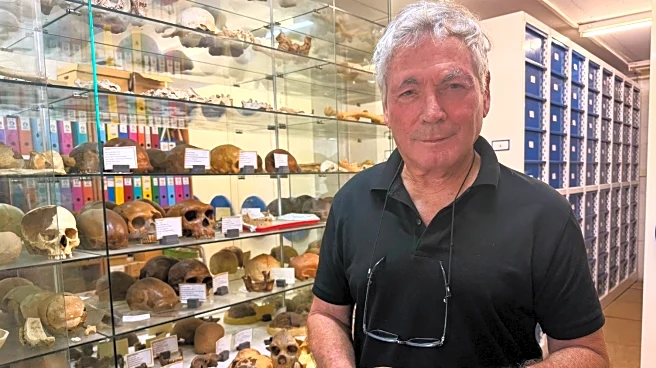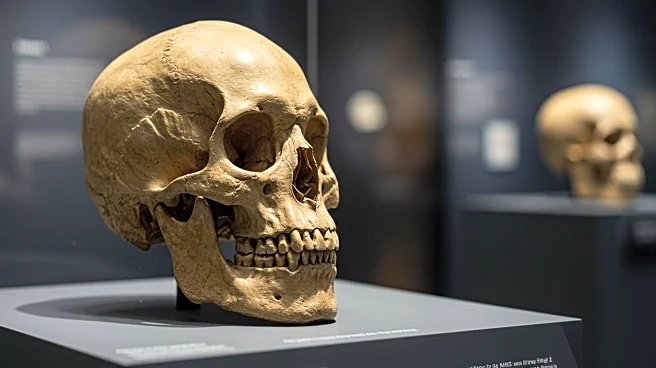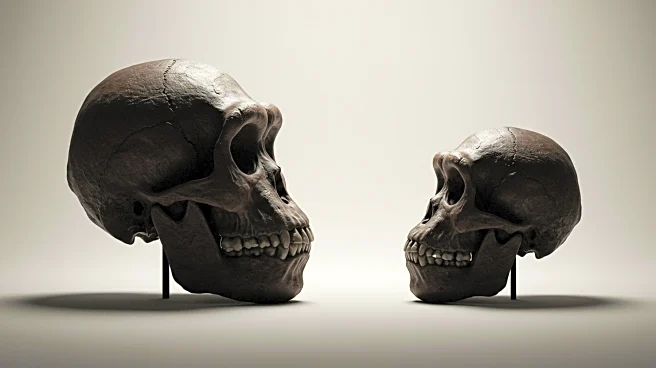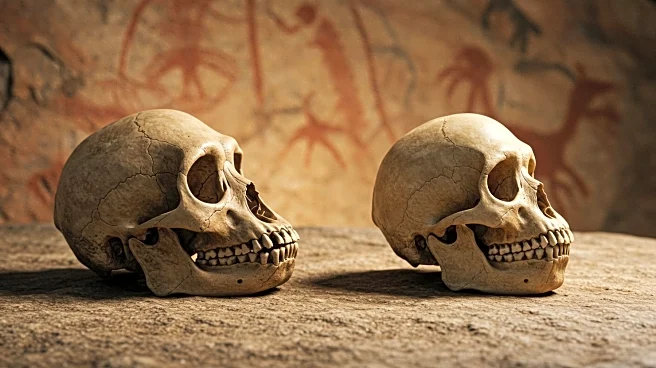Rapid Read • 8 min read
Researchers have uncovered evidence suggesting that modern humans and Neanderthals interacted and interbred much earlier than previously believed. A study published in the journal L'Anthropologie details the analysis of a child's mandible excavated from Skhul Cave in northern Israel, dating back approximately 140,000 years. Using CT scans and 3D mapping, scientists identified traits in the bones that indicate the child had characteristics of both Homo sapiens and Neanderthals. This discovery challenges the previous understanding that interbreeding between these groups occurred around 40,000 years ago in central Europe. The study, led by Israel Hershkovitz from Tel Aviv University, suggests that Homo sapiens and Neanderthals coexisted peacefully, sharing cultural practices such as burials and tool construction.
AD
This discovery has significant implications for understanding human evolution and the interactions between Homo sapiens and Neanderthals. It suggests that these groups may have had extensive relationships much earlier than previously thought, potentially altering the narrative of human migration and cultural exchange. The findings challenge the notion of Homo sapiens as intolerant to other human groups, highlighting a period of coexistence and cultural sharing. This could reshape theories about the nature of early human societies and their interactions, providing insights into the development of human culture and social structures.
Further research and excavation at Skhul Cave and other sites may provide additional evidence to support the hypothesis of early interbreeding between Homo sapiens and Neanderthals. Advances in technology, such as 3D modeling, offer new opportunities to re-evaluate previously excavated specimens and refine our understanding of ancient human interactions. Continued studies may reveal more about the cultural practices and social dynamics of these early human groups, potentially leading to a deeper understanding of human evolution and the factors that influenced the development of modern human societies.
The study raises questions about the nature of early human interactions and the factors that led to the eventual dominance of Homo sapiens. It challenges the perception of Homo sapiens as inherently aggressive, suggesting that cultural factors, rather than biological ones, may have influenced later conflicts. This perspective could influence current discussions on human behavior and the roots of aggression, offering a historical context for understanding modern societal issues.
AD
More Stories You Might Enjoy












